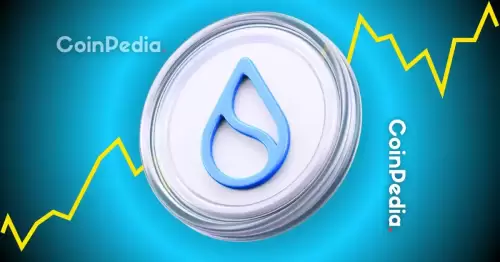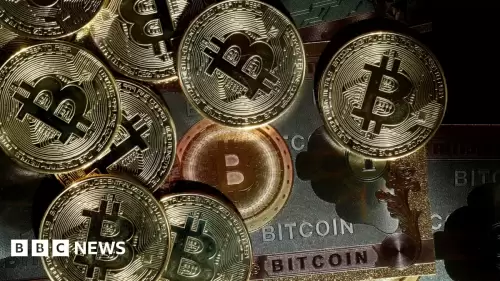 |
|
 |
|
 |
|
 |
|
 |
|
 |
|
 |
|
 |
|
 |
|
 |
|
 |
|
 |
|
 |
|
 |
|
 |
|

Known for its speed, low-cost transactions, and institutional focus on cross-border payments, XRP, the digital asset native to the XRP Ledger (XRPL), has long been recognized for its unique strengths. As decentralized finance (DeFi) continues to mature, there’s a growing push to bring XRP into the fold — a movement increasingly referred to as “XRPFi.” The goal is simple: enable XRP holders to participate in the broader DeFi ecosystem, from lending and staking to trading and yield farming.
This isn’t merely a speculative trend. Recent events — including Ripple’s court victory against the SEC and the launch of Ripple’s own stablecoin RLUSD — have reignited interest in XRP as a foundational asset. But unlike Ethereum, the XRPL wasn’t built with smart contract capabilities. It lacks native support for programmable DeFi primitives, making it difficult to use XRP in the kinds of applications that define DeFi today.
Several solutions have emerged to address this. XRPL sidechains like the EVM-compatible chain developed by Peersyst and Ripple allow Solidity-based applications to run with XRP as the native gas token. The Xahau sidechain offers another alternative by introducing “Hooks” — lightweight WebAssembly-based smart contracts. These initiatives are promising and important to XRP’s long-term growth, but they’re still early-stage and require bridging assets across networks.
This is where Flare enters the picture — not as a sidechain or auxiliary layer, but as a purpose-built Layer-1 blockchain aiming to give non-smart contract tokens like XRP full access to DeFi functionality. And based on adoption metrics, it’s clear Flare is leading the XRPFi charge.
How Flare Brings XRP to DeFi
Flare is an EVM-compatible Layer-1 network built from the ground up to unlock the utility of assets like XRP, BTC, and DOGE. Through a combination of native bridging mechanisms, decentralized oracles, and data acquisition protocols, Flare allows these previously siloed assets to be used in smart contracts and DeFi applications without relying on centralized custodians.
For XRPFi specifically, the cornerstone is the FXRP system — a mechanism that allows XRP to be trustlessly wrapped into a DeFi-compatible form and deployed on Flare. This process involves no centralized intermediaries; instead, it relies on decentralized agents and collateral to mint FXRP at a 1:1 peg with XRP locked on the XRPL. Once wrapped, FXRP becomes usable across any smart contract on the Flare network.
Equally important is liquidity — and Flare has tackled this with the deployment of USD₮0, a native stablecoin backed 1:1 by Tether’s USDT on Ethereum. Unlike wrapped tokens, USD₮0 uses LayerZero’s Omnichain Fungible Token (OFT) standard to move seamlessly between chains. This gives Flare an immediate injection of deep, stable liquidity — a critical ingredient for any DeFi ecosystem.
In the weeks following USD₮0’s launch, nearly $70 million was bridged to Flare. This figure, tracked via Flare’s own analytics dashboard on Dune, represents one of the most significant stablecoin inflows to any new chain in recent memory. For context, this occurred even before Flare’s full DeFi suite had officially launched, underscoring a strong vote of confidence from users and investors.
To complement FXRP and USD₮0, Flare has cultivated a native DeFi ecosystem that includes applications like SparkDEX for decentralized trading, Kinetic for lending and borrowing, and Sceptre for liquid staking. Wallets such as Bifrost and Oxenflow have integrated Flare, making it easy for XRP holders to interact with these dApps through familiar interfaces.
Flare has described this architecture as the “XRPFi flywheel”: FXRP brings in XRP, USD₮0 provides the liquidity, and native dApps give users a reason to stay — driving compounding growth for the entire ecosystem.
Flare vs. the Field
Flare isn’t the only entity working to make XRP a DeFi-ready asset, but its approach and execution stand out.
On one end, XRPL’s AMM implementation and the EVM sidechain provide important experimentation grounds for bringing DeFi to XRP. Ripple’s RLUSD stablecoin is also a meaningful addition to the XRP toolkit. But these efforts remain fragmented and are often limited in scope or user accessibility.
Xahau offers an innovative direction with its ‘Hooks’ model and native smart contracts, but it introduces a new token (XAH) and has yet to gain serious traction outside the XRPL enthusiast community.
In contrast, Flare brings together all the necessary components — trustless XRP bridging, stablecoin liquidity, and an expanding suite of DeFi dApps — into a single, composable Layer-1 environment. Its interoperability-first design allows DeFi builders to tap into multiple ecosystems without starting from scratch, while EVM compatibility ensures that tools from Ethereum and other chains can be easily ported over.
Importantly, users are already showing up. Flare’s total value locked
免责声明:info@kdj.com
所提供的信息并非交易建议。根据本文提供的信息进行的任何投资,kdj.com不承担任何责任。加密货币具有高波动性,强烈建议您深入研究后,谨慎投资!
如您认为本网站上使用的内容侵犯了您的版权,请立即联系我们(info@kdj.com),我们将及时删除。
-

- 加密波动和令牌解锁:导航风暴
- 2025-08-05 15:57:47
- 令牌解锁可以激发加密货币市场的波动。了解这些事件的影响,策略和社区情绪。
-

-

- 比特币,美联储税率和加密货币:纽约人的拍摄
- 2025-08-05 13:23:49
- 导航加密货币嗡嗡声:比特币的弹性,税率降低了耳语以及加密货币的兴起。在这个财务前沿获取内部勺子。
-

- 警察,加密货币,比特币意外收获:意外收益和警告性故事
- 2025-08-05 13:18:22
- 从受益于比特币意外收获的警察部队到有关加密货币骗局的警告,我们深入研究了执法和数字资产的交汇处。
-

-

- Bitmine的以太坊财政部:加密统治的纽约分钟
- 2025-08-05 13:01:22
- Bitmine的快速积累以太坊激发了加密纪念品的一场比赛,将其持股推向了30亿美元,并巩固了其作为主要参与者的地位。
-

- 以太坊的开放兴趣繁荣:机构资本如何改变游戏
- 2025-08-05 12:37:21
- 以太坊的开放兴趣达到记录最高,因为机构投资者涌向ETH,这是由DEFI和智能合同创新所吸引的。但这是可持续的吗?
-

-






























































